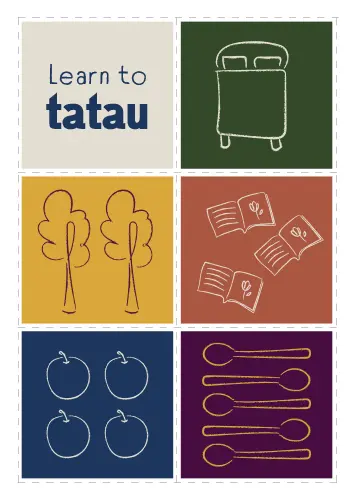
Basic maths ideas
How to introduce children to early maths ideas through household jobs and objects.
When a child is 2 to 3-years-old they develop a number of skills and concepts that are building blocks for future maths and reading skills. These include matching, sorting, classifying, and comparing. At this age children can understand processes and patterns. They also understand the concepts of more, less and equal.
Matching, sorting, classifying and comparing
- Matching usually comes first and is about being able to work out which objects are alike. The world is full of things that can be matched and games can be created easily using pictures, stickers and magazines. The game ‘Memory’ is a good example of how to develop and use matching skills.
- Sorting happens when objects are put together according to one common characteristic like colour, size or shape. All the red toys may be a collection of blocks, balls, animals or stars. These are all different objects but can be sorted by colour. Children can be encouraged to sort by doing little jobs around the house, like putting away the cutlery or the washing.
- Classifying is another skill that is more likely to emerge at around the age of three. Objects are alike in some way — but do not share any one particular characteristic. Classifications could be ‘things you find on the beach’, ‘things you wear at home’, ‘things you eat’ or ‘things you find in the bathroom’.
- Comparing involves being able to identify and describe the similarities and differences between objects. For example, these two things are red, but they’re different shapes.
Processes
Processes are discussed in the Whakatipu booklet Te Kōhuri 2. Page 15 describes the steps involved in making a sandwich. In order to learn about anything and be able to execute it, you have to remember the process — what happens first, then what you do next and so on. Understanding there is a sequence of events that must be followed to get the desired outcome is a basic skill that helps lay the foundations for maths, reading, and science.
Patterns
Children love to play with small colourful items such as counters, buttons, plastic blocks, and beads. A basic repeating pattern might just be red, blue, red and blue items lying in a row or being threaded on a string. Patterns become more complex by adding more colours, shapes and sizes. Learning about repeating patterns helps children recognise there is order in the world, and it’s great preparation for future maths and reading.
More than, less than, and equal to
More than, less than, and equal to are concepts children become familiar with in everyday life when they detect an injustice about the division of food or toys, or anything else that matters to them.












